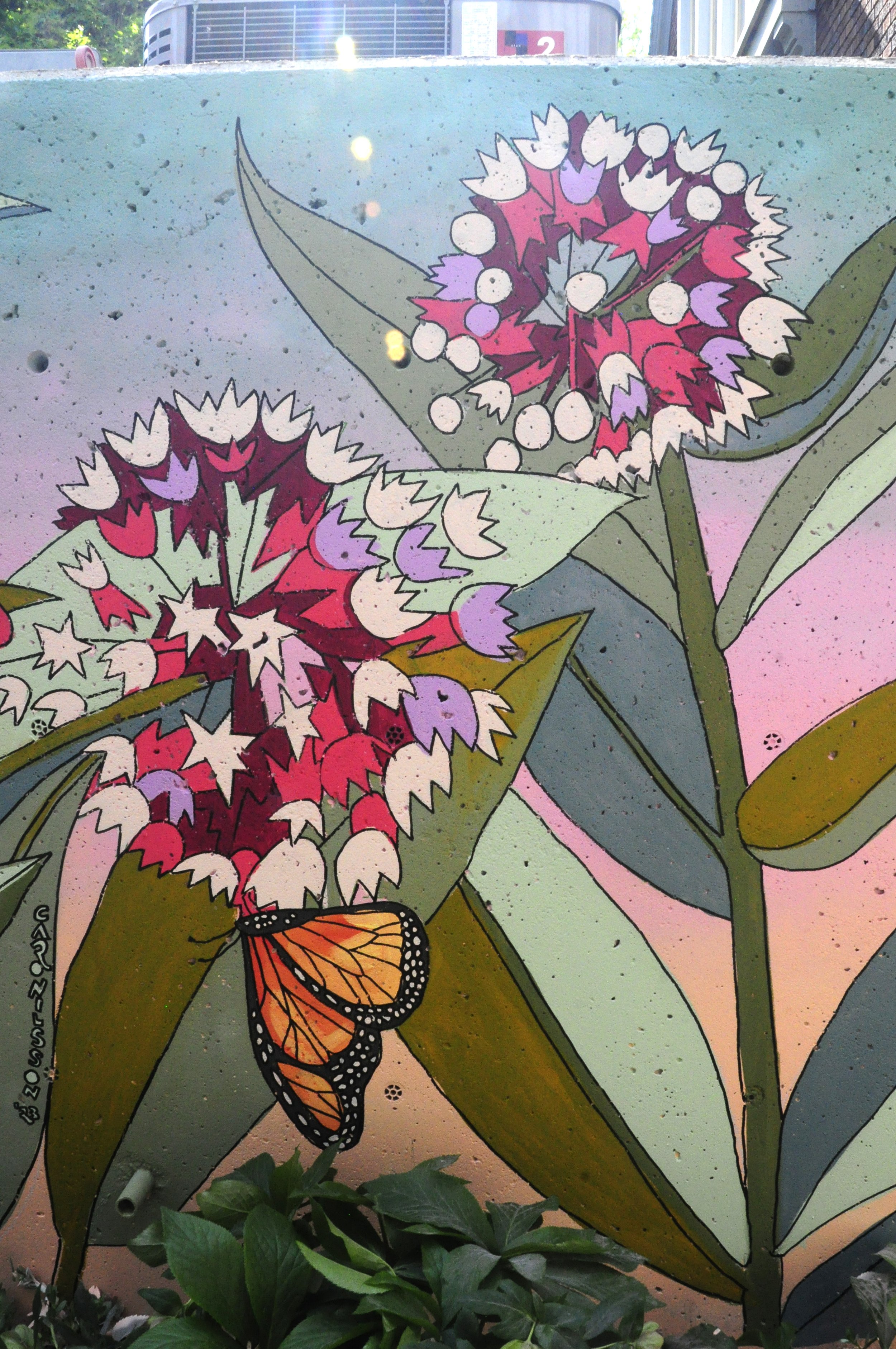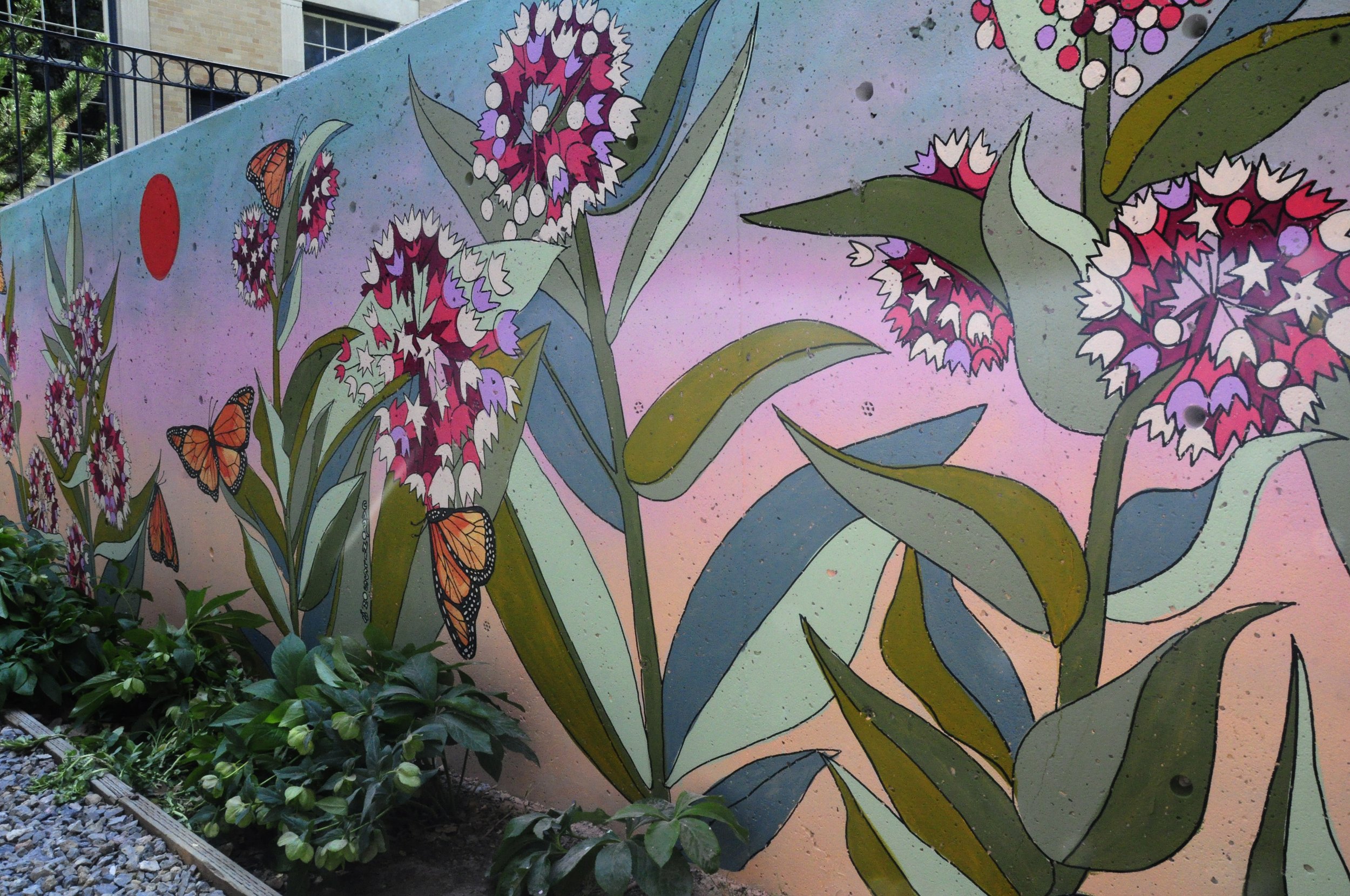Painting the Way for Monarchs and Milkweed
As the city and foothills warm, life begins to stir amongst our petaled and fluttering friends. The perennial flowers come back from a long winter’s slumber, bumblebees emerge, and the butterflies begin to appear again on our horizon.
The first Monarch observation was made in Salt Lake County this past week, and with this news, it feels as though a collectively held breath was released.
The Monarchs are back.
The conservation status of the Monarch butterfly has been a bittersweet one - to see these magnificent creatures added as candidate for the Endangered Species list in 2022 told a tale of significant loss while offering a glimmer of hope that perhaps they could finally gain the protections that they need to bounce back.
So when we saw a new mural pop-up at the Salt Lake Public Library’s Sprague Branch featuring the monarchs and milkweed that we hold so dear, we were nothing short of delighted!
We were thrilled to have the opportunity to chat with Caro Nilsson, the Salt Lake City based artist who made this mural a reality.
Get to know Caro in our interview below!
Can you tell us about yourself and your artistic journey?
Art has been a defining character trait for me as long as I can remember- when I was little and asked what I wanted to be when I grew up, the answer oscillated between zoologist and artist. I studied both art and architecture in college, and pursued a career in architecture until about 3 years ago. I moved to Salt Lake for a dream job, and then I was offered a painting residency and had to admit to myself that architecture was not my dream - making my art was. In order to take the residency, I had to quit my job and jump into the void. That's exactly what I did, and I have been figuring out how to practice art full-time since then.
What is your relationship with the natural world?
I feel like this question is funny! When people say that they love nature, it makes me giggle. Nature feels like the only thing that is real! The natural world is a place we are all a part of, and somehow we convince ourselves that we are somehow separate from it. I have been thinking a lot recently about what home means to me - and how so many different places can feel like home. A place feels truly like 'home' to me when I have an intimate relationship with the land itself. I want to know who the plants are and what they look like in different seasons, what trails wind up into the hills and what they look like in the morning and at dusk. Knowing and anticipating exactly what comes with each season, the smells, the birds, the weather, the animals - that makes me feel like I am in a relationship with my home.
What sparked your inspiration for your latest mural?
This mural was part of a window well mural series for the Sprague Library. They have beautiful below-ground library space that used to look out at blank poured concrete, and these murals were meant to brighten those spaces. The monarch and milkweed mural in particular was designed to have a magical, almost story-bookish feeling to it, idyllic and pristine. The relationship between monarchs and milkweed is a beautiful one to me, a sacred and disappearing one. A relationship to honor. Milkweed is indeed poisonous to other animals, which is why it's so often removed from fields and prairies that are set for grazing. However! It is a key species that supports entire ecosystems- it's an important food source for more than just monarchs.
There seem to be a lot of native wildflowers throughout your work - can you share about the importance of these plants to you?
The native plants really feed into the whole 'home' idea- who lives here, what knowledge do they have from eons of existing and adapting to the environment, how can we learn to respect them, and be more like them? Every place has such a distinct and unique set of creatures that are perfectly suited to inhabit it after years of coevolution. What a mystery and a delight to witness them! Particularly with flowers, they feel to me like holidays to look forward to - the balsamroot superbloom in the foothills, the first castilleja of the season, the glacier lilies as the snow melts.
What role do you think art has in the world of wildlife conservation?
When I think about the reason at the very bottom of why I make art, starting conversations and having a meaningful impact are there. Art is about sharing, about dreaming for a better future, about imagining, about noticing that we are already situated in a world where the most beautiful things you can imagine are happening all the time. Art is a powerful communication tool - why not use it to conserve the most threatened and precious parts of ecosystems?
Thank you so much to Caro for carving out spaces of beauty in our urban spaces - these murals are truly an inspiration and delight.
You can find Caro’s work on Instagram at @caroznilsson or on her website carozobservations.com. She will also be at the Fisher Art Market on July 12th!
Be sure to follow along to see more of her work, and head to the Sprague Branch to see her latest mural in person!
Interested in conserving these critical pollinator species and their habitats? Get involved in the Utah Pollinator Pursuit, which relies on community scientists to gather information about these species that will support conservation plans.
All images throughout this piece have been shared by Caro Nilsson.






